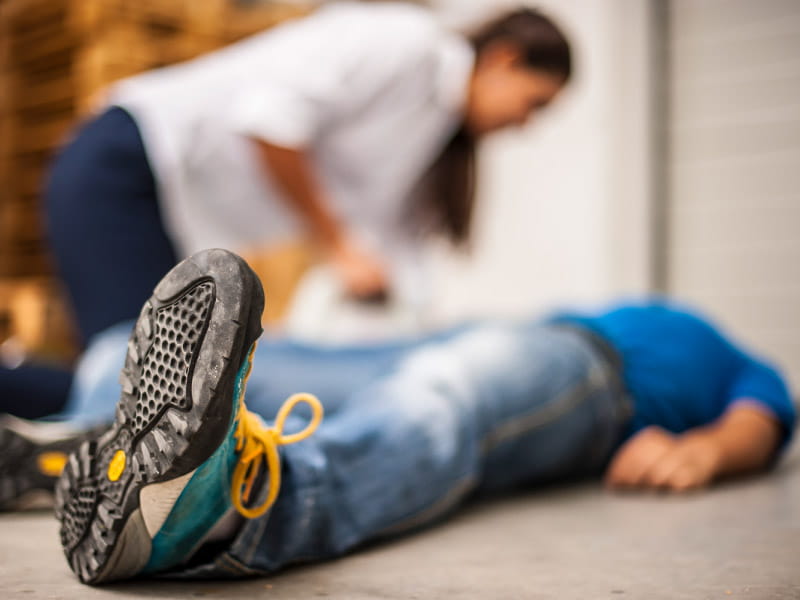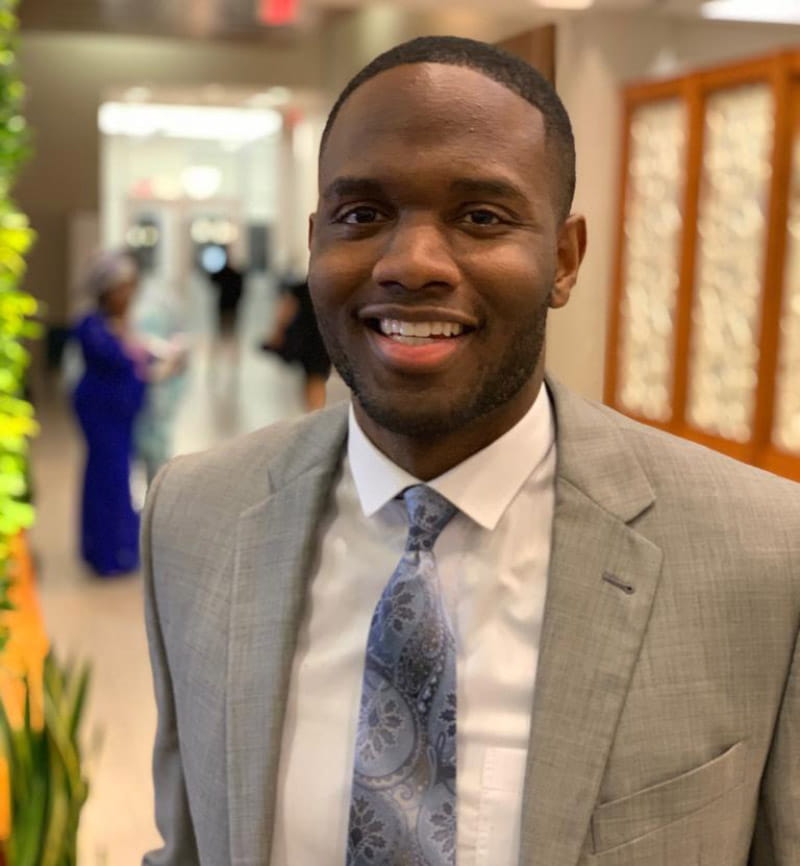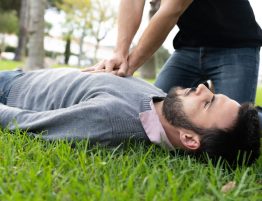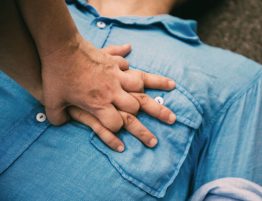
Dr. Anezi Uzendu should not be here to explain what a cardiac arrest looks like. He’s alive only because strangers at a gym understood – and acted.
In 2016, Uzendu, then a 25-year-old medical resident, was playing a pickup basketball game at a gym in Birmingham, Alabama. He doesn’t recall what happened, but he’s told he scored, then collapsed.
“First, they kind of thought I was joking,” he said. “But then they realized I wasn’t breathing.”
He’d just become one of roughly 350,000 U.S. adults annually who have an out-of-hospital cardiac arrest. In most cases, the story – and the patient’s life – ends there. Uzendu’s did not because of what happened next.
“People at the gym recognized that I was having a cardiac arrest and started CPR,” he said. “There was a defibrillator at the gym, and they attached it, and they used it.” His heart was shocked twice before emergency workers arrived.
Saving his life took what Uzendu calls “heroic” efforts by those workers and the emergency department where he was taken. Three weeks later, he was discharged. Today, he is an interventional cardiologist finishing up a research fellowship at Saint Luke’s Mid America Heart Institute in Kansas City, Missouri.

Medical experts talk about the steps that it takes to save someone who has a cardiac arrest outside of a hospital as a “chain of survival.” Witnesses, such as those who responded to Uzendu, who can identify the problem are the first link in that chain.
“The most important thing that a bystander can do is to recognize the issue and then act quickly by first calling 911, then doing CPR” and calling for an automated external defibrillator, or AED, said Mary Newman, president and CEO of the Sudden Cardiac Arrest Foundation, which is based in Pittsburgh.
But Newman, a researcher who developed that idea of a chain of survival, said recognition can be tricky, because cardiac arrest doesn’t necessarily look like a heart problem in the movies, where someone might dramatically clutch their chest and swoon. Even NFL player Damar Hamlin’s wobbly collapse on “Monday Night Football” in January doesn’t convey the whole experience.
A major source of confusion is that people often think cardiac arrest is the same as a heart attack. “They’re two different things,” Newman said. A heart attack is often likened to a plumbing problem, where blood flow to the heart muscle is stopped. Although a heart attack can lead to cardiac arrest, cardiac arrest is an electrical issue, where the heart stops beating properly.
“When you have a heart attack, you’re awake, and your heart is beating, and you don’t need CPR,” Newman said. “You just need to call 911 and get help. But with sudden cardiac arrest, their heart has stopped. And if no one intervenes quickly, they will die.”
She corrected herself: “When you’re in cardiac arrest, you’re actually dead. And the challenge is to bring the person back to life.”
Even among people who know what cardiac arrest is, it can be challenging to figure out. But for anyone who does not have medical training, Uzendu said, it comes down to two questions: “Are they responsive? And are they breathing normally?”
Checking responsiveness is as simple as tapping them on the shoulders. But many bystanders, also called lay responders, are confused by “agonal breathing.” Uzendu described that as “strange, intermittent breaths, very short breaths, very shallow breaths. Sometimes they’re kind of one large breath, and then nothing for a long time.”
Agonal breathing can come in a lot of variations, he said, but at the end of the day, “if you notice their breathing isn’t normal or not present at all, that should be a trigger to think this person is having a cardiac arrest.”
Sometimes, cardiac arrest also can cause jerking movements as if someone is having a seizure, he said, which also can slow people from responding.
If you see somebody collapse, don’t waste time pondering the possible causes, Uzendu said. During the time that it takes someone to recognize a cardiac arrest, the patient’s vital organs are being starved of blood.
“For every minute that someone doesn’t receive CPR, and doesn’t get an AED to shock them out of an abnormal rhythm, survival drops precipitously,” he said. Having a bystander perform CPR can double or triple the chances of somebody surviving.
Don’t worry about needlessly performing CPR either, he said. “I’m more concerned about people waffling and saying, ‘I don’t think this is it’ or ‘I think this could be something else.'” If you attempt CPR on someone who doesn’t need it, they’ll quickly stop you, and no harm is probably done, “whereas if you don’t start CPR on someone that does need it, it’s almost universally fatal.”
You can help even if you’re not formally trained, Uzendu said, but “if you have the training, and you have the skill set, it’s so much easier for you to go in and act,” he said. Free American Heart Association videos can provide the basics before you seek out hands-on training.
Cardiac arrest can strike seemingly healthy people without warning, but sometimes there are symptoms, such as dizziness or fatigue, Newman said.
Uzendu said that a few weeks before his cardiac arrest, he’d passed out playing basketball but ignored it. “I just chalked it up to being dehydrated.”
Doctors never determined why he went into cardiac arrest, but he’s aware he beat the odds. Lay rescuers administer CPR in only about 40% of cases. “We know that survival from out-of-hospital cardiac arrest is less than 10%.” He estimates his own odds of a full recovery were even lower.
“I thank God I survived,” Uzendu said. And he would not have done so without the people who recognized what was happening, and acted. That, he said, “shouldn’t be something that I get to benefit from, but other people don’t.”
If you have questions or comments about this American Heart Association News story, please email [email protected].






